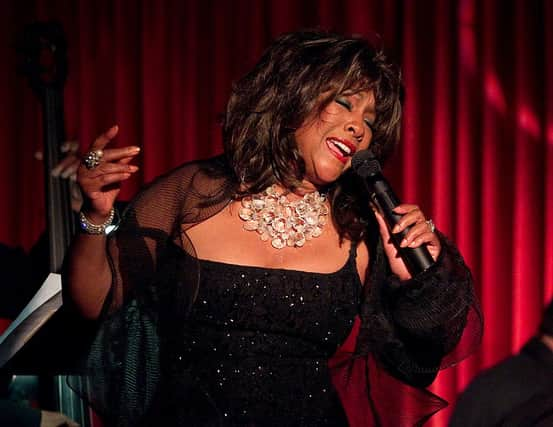Obituary: Mary Wilson: singer with legendary Motown group The Supremes


Mary Wilson was a teenage schoolgirl living in the Detroit projects, with a mother who was reliant on benefits to keep her children fed, when she auditioned for a new African-American record company along with schoolfriend Florence Ballard and neighbour Diane Ross (sic).
They were originally a quartet called the Primettes, a sister act to another local group called the Primes. When they signed to Motown in 1961 they became the Supremes and Diane Ross subsequently became Diana Ross, while the Primes became the Temptations.
And the rest is history… Well, not quite.
Advertisement
Hide AdAdvertisement
Hide AdOver the next three years the Supremes brought out a string of singles, most of which made only the lowest reaches of the charts or missed altogether, while other Motown acts had big hits. The girl group the Marvelettes provided the label with its first Number One, Please Mr Postman, while the Supremes earned the nickname the No-Hit Supremes.
Cutting down from a foursome to a trio made little difference. It was only when the Supremes recorded a song that had been turned down by the Marvelettes that they finally had a major hit, going all the way to Number One in the US and Number Three in the UK with Where Did Our Love Go.
If the Marvelettes had not turned it down, the Supremes might not even have merited a footnote in pop history. Where Did Our Love Go was the first of ten Number One singles in the US in four years.
With a smooth and melodic soul sound and wearing figure-hugging gowns and hair piled high on their heads, the Supremes had a glamorous image that was designed to cross over to white audiences.
Their success was repeated internationally, Baby Love reached Number One in the UK and they performed at the Royal Variety Show in 1968, where the notoriously rude Princess Margaret asked Wilson if she was wearing a wig.
But there were tensions in the group. Ballard had been the driving force in the early days. But Ross was having a relationship with company boss Berry Gordy. Wilson considered Ross manipulative and self-serving and it got worse when Gordy restyled them as Diana Ross and the Supremes in 1967.
Ballard left the group, pursued an unsuccessful solo career, struggled with alcoholism and depression and died in 1976 at the age of 32. Ross left in 1970 and pursued a highly successful solo career.
Wilson’s 1986 memoir Dreamgirl: My Life as a Supreme begins with an account of Ross literally pushing her out of the way at a 1983 TV reunion. “Diane always liked to be the centre of attraction,” she wrote. “She has done many things to hurt, humiliate and upset me. But strangely enough I still love her.”
Advertisement
Hide AdAdvertisement
Hide AdAfter Ross’s departure Wilson took charge of the Supremes, with Cindy Birdsong and Jean Terrell completing the line-up. They had further hits, including Up the Ladder to the Roof, Stoned Love, Nathan Jones and Floy Joy, all of which reached the UK Top 10.
After further personnel changes, the Supremes disbanded in 1977. Subsequently Wilson proved a popular attraction in Las Vegas and she wrote several volumes of well-regarded, best-selling memoirs.
The eldest of three children, Wilson had been born in 1944 in the town of Greenville, Mississippi, where segregation and racism were facts of daily life. In the middle decades of the 20th Century many thousands of African-American families moved north in search of a better future and the Wilsons headed for Chicago.
Mary Wilson however went to live with an aunt and uncle in Detroit. She was reunited with her mother and siblings when they too moved to Detroit after her parents split up. It was here that she met not only Ballard and Ross, but also Aretha Franklin, the daughter of the local Baptist pastor.
Ballard was instrumental in putting together the Primettes with Wilson, Ross and a fourth singer Betty McGlown. They recorded their first single for a small company called Lu Pine, but continued to hang around the Motown studios after school and got to sing backing vocals for the likes of Marvin Gaye before eventually persuading Gordy to sign them as a group in their own right.
Motown seemed to have the magic formula for producing hit records… except when it came to the Supremes. They seemed destined to be the studio’s big failure, despite concerted efforts to get them a hit, until that fateful moment when the Marvelettes decided Where Did Our Love Go was not good enough to be a single.
The sentiment was shared by the Supremes, but they were in no position to pick and choose. It turned out they were all wrong and the Supremes eclipsed the Marvelettes and became the most successful girl group in American pop history.
The group in the hit Broadway musical Dreamgirls was largely based on the story of the Supremes, complete with all the ups and downs, friendships and fall-outs, and Wilson borrowed the title for her first volume of memoirs.
Advertisement
Hide AdAdvertisement
Hide AdIn the second volume Supreme Faith: Someday We’ll Be Together, she recounted years of violent abuse following her marriage in 1974 to Pedro Ferrer, a Dominican businessman who became manager of the Supremes. On one occasion he smashed a glass into her face and almost severed part of her ear. They divorced in 1981.
She was engaged to Duke Fakir of the Four Tops and was also romantically involved with Tom Jones and Steve McQueen. She is survived by a daughter and a son. Another son died in a road accident in 1994.